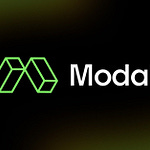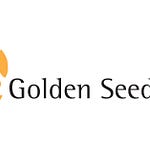Word of mouth is crucial to a company’s growth. But historically, B2B companies haven’t been able to track, measure, or influence word-of-mouth systematically. Meanwhile, our B2C counterparts have benefited from referrer codes and trackable invitations for over a decade!
Stefan Bader, Founder/CEO at Cello, figured out a fintech solution to enable B2B companies to incentivize referrals. So he knows more about “user-led growth” than anyone else. After investing in his seed round, I was excited to dive deep into this new functional discipline that growth marketers everywhere should be mastering.
We discussed:
How does user-led growth relate to product-led growth?
What are the metrics for best-in-class user-led growth?
What growth marketing tactics can multiply referrals?
…and many other topics, as we unpacked this new category.
By the way, in the interest of dog-fooding Stefan’s product, I created my own referral page for Cello. Check it out and you’ll receive all features from their paid plans for free.
You can listen to the conversation or else read the lightly edited transcript below. Enjoy!
If you’d like to learn from more founders about how to scale B2B companies, subscribe here for free!
Transcript
Allison Pickens: Stefan, thank you so much for joining us on the podcast today. I've been so excited to record this conversation with you because the topic that we're going to be discussing today is something I've been thinking about for a decade. And the timing finally makes sense. Thanks for joining.
Stefan Bader: Hi, Allison. Thanks for having me here.
AP: To set the stage, what is user-led growth?
SB: User-led growth is the next evolutionary extension of a go-to-market strategy, which is completely complimentary to the three existing categories we know, which are sales-led growth, marketing-led growth, and what has in the past few years has become a more famous product-led growth or PLG.
User-led growth is the next and fourth category. The idea behind it is to incentivize your users to help you grow your business. So, it's about aligning incentives between products and their power users by rewarding users based on the influence they exhibit in talking about and referring to products.
AP: User-led growth is a topic that sprung up in B2C and consumer worlds. Why did B2B companies not seem to understand how to instrument this in the way the B2C companies do?
SB: User-led growth has been around for many years. We were just the first ones to coin it and give it that name. As we know, user-incentivized referrals have been around since the early stages of the internet, with companies like Dropbox, PayPal, and the Ubers of the world. In those cases, how to align incentives with the users was quite obvious. The way to do it was always to give them free features like Dropbox did with free storage.
However, it’s a bit more complex for B2B users because giving out free months or free features to B2B software users is not really an incentive to them because usually their employer pays the bills. So, they don't really care too much if the employer pays the bill.
We're the first ones to actually think of incentives in a completely new way for B2B referrals by providing actual monetary incentives back to the users. This sounds easier and more trivial than it actually is because providing monetary incentives to users from a business has implications around tax and also around KYC rules, because this falls under money laundering laws. Therefore, it's basically a beast to make this work in the background.
AP: It sounds like we haven't had the systems in place to incentivize B2B users in monetary ways, and it's the lack of software to make this happen essentially that has been the root cause of B2B companies not really implementing user-led growth. Is that right?
SB: That's completely right. It's actually a combination of tracking software, but also it combines a FinTech approach to it and a regulatory approach, where we at Cello have built a tax and legal framework to make this all happen.
For B2B companies, it was very difficult until now to roll out a compliant user referral program just because of those factors. And it's not just the software purely, it's even more.
AP: Is part of the problem that in the B2B world, we're charging on a subscription basis, and so if you want to give a referring user some cut of the subscription, it's kind of complicated. You have to pay them a cut of a monthly payment that's coming in. So, over the course of 12 months you might have to make 12 payments.
SB: Absolutely. The surface area of our product might look very little, but in the end, we're hooking our system into the payment gateways of our customers to really understand what payments are floating into their systems that originated from user referrals.
So, it's about tracking the whole lifecycle of payments. Where those payments are coming from, and then connecting the dots and actually paying out those users globally. As most of our customers have a global user base, you will also have effects around currency conversion and cross-border payments, which makes it even a bit more complex.
AP: Wow. I'm already seeing what your product roadmap looks like. I want to set aspirations for folks about what's possible here with user-led growth. To start, what are some examples of companies that might not have used your product before? Because it hasn't existed beyond a year or so. What are some companies that have done a really good job even before software or a FinTech solution existed in instrumenting user-led growth?
SB: In the very early days, as I mentioned, a few companies have actually nailed it for B2C. Some of the listeners might have heard the examples of Airbnb, PayPal, and Dropbox. They have grown tremendously by just this single growth loop. Some of the customers we're currently working with include Typeform, Tango, and Personio. There are some of them that are applying what we're suggesting and even go beyond that.
So, we're learning day by day, more and more, because our customers also love to experiment and A/B test. And all those lessons we see amongst our customers, we're trying to apply to the rest — from how to phrase messages, to what are the right triggers to ping users to refer a product, and even how to set the right rewards and discount structure. Every day we learn something new, and it's quite exciting.
AP: Are there certain types of companies that you think are best enabled to drive user-led growth? For example, companies that are selling to SMBs, maybe developer tools companies because developer tools companies tend to grow through word of mouth. Any other attributes that come to mind for you?
SB: We have actually set up a referral Venn diagram. The three dimensions we're seeing there that positively affect the performance of referral programs are: (1) fast time to value, (2) high level of product engagement, and (3) high product lifetime value. If you hit two of the three, you're in a very good place. Some companies actually hit all three—companies like Pitch, Asana, Calendly, just to name a few. They're in a very sweet spot where referral programs take off extremely well.
Programs are performing even a little bit better in industries where digitization has just started. And also in industries where communities tend to be a little bit stronger than other industries. As you mentioned, those that refer to developer tools.
AP: Basically you're saying that if users are getting value very quickly, they love it, and they're getting value over a long period of time as well, there's a high chance that they're going to refer a product to someone else. Do you think that those companies are not instrumenting user-led growth as much as they could be? For example, could you help Airbnb, Typeform, or Calendly grow even faster than they already are?
SB: Absolutely. A year and a half ago, when we started the company, I was actually sitting in the exact same spot. I used to be CRO at another SaaS company. I was trying to implement this with my growth team, and we didn't find any tooling out there. I was quite surprised as to why nobody had ever productized this.
Now by working with many of the best companies, we see that we can accelerate their flywheel by applying the right incentives to users to help them spread the word.
This might happen even without incentives, but it's just pouring a bit more gasoline into the engine.
AP: If a company doesn't have two of those three factors in the Venn diagram, let's say there isn't fast time to value; for example, is it still worthwhile to try to make user-led growth part of their strategy?
SB: The way we have designed our product, we want to make it as easy as possible to just test it out. So, we have set up a freemium product with the first couple of thousand referral ARR that is completely free and an implementation time that is around four hours. So, it should be a no-brainer for every company to test it out and to try it.
Even if user referrals might not work as well for some as for others, it's a positive new growth channel that just works without any maintenance effort. It’s worth it to try it out and just to test it. And if it works, it can be a significant improvement to your whole go-to-market strategy and flywheel.
AP: I’d like to learn the standard for what best-in-class user-led growth looks like. Are there certain metrics that people should be tracking? Are there certain thresholds for those metrics that they should be aiming toward? For example, in the B2C world, people would talk a lot about the viral coefficient. I don't know if that's as relevant here.
SB: There are two metrics we especially have in mind. The first one is a new one we have introduced called annualized user-to-customer conversion rate, or AUCC. The idea behind this metric is to measure how many new customers one user can bring in during the course of a year. It basically talks a bit about the virality of the whole program, and the best-in-class level we see for freemium products is around 20%. So, five users bring in one new customer in one year. The median is around about 12% for freemium SaaS and 2.4% for sales-led. So it is a very interesting channel to keep in mind and to look at.
When it comes to free-to-paid conversion rate, this is the second metric that is important because we're working together with many freemium and free trial products. That’s because sharing feels even more natural to those products. We see that user referrals for freemium products are around 18%, and free trial are around 67%. But when we look at paid channels, freemium is 2.6%, and free trials are 7.4%. So, there's a massive leap in those metrics compared to classic channels, which makes it even more interesting. It's not just about the pure number of signups we can produce with that. It's also about how well and how fast it can convert, which is quite unique to that new channel.
AP: It's fascinating thinking about the impact that you're having. It also seems like you can have even more impact with user growth or more impact that you can measure, which is the dollar value of the contracts that are coming in, right? It's not just like how many other users you can refer to.
If one user refers five users from a particular account and then a senior stakeholder at that account signs a $200K contract with a vendor, that one user has produced essentially a $200K contract. It might be a little bit more difficult to measure or track that progress. But I think the general question is, how do you think about the dollar value of the referrals, not just the volume?
SB: We don't actually have to think so much about lifetime value because we're paying the users month over month. So every single month, we're tracking how much value has been created and are paying out a percentage of that created value to the actual user. And if the customer's lifetime is long, then the referrer payments will also be long.
Usually, our customers cap the payouts at certain dollar levels. For example, $1,000, $5,000, or $10,000. So, they wouldn't have to pay out for years and years, but just until that number. Still, it’s a lot more significant than any payouts that could be received in the B2C world, which, of course, helps to overcome the additional sharing and conversion friction in B2B. This is what makes it work in the end for B2B.
We're trying to reduce additional friction where we can. We're trying to embed it as well as possible in the user journey, to create valuable touch points with the right contextual messages at the right time, and then provide high enough incentives to make the whole wheel spin.
AP: Let's dive into the processes that people are pursuing to instrument user-led growth. What are three best practices that people are starting to use that you're working with?
SB: If I had to pick three, I would probably go with rewards, touchpoints, and A/B testing. It all stands and falls with picking the right rewards. It doesn’t work to copy and paste what is working for other products or what has been working for years in B2C.
It's really important to understand your users and to understand what the right incentives are for your users of your product in your given market. And it goes hand in hand with A/B testing. It is an optimization problem in the end, and you should have enough flexibility to A/B test and move your product towards a global optimum. That can be testing out the right messages or the right triggers. But eventually, you also need the right discounts for the referees and the right rewards for the referrers.
It's important to make all of this work. It's probably difficult to get it right on the first shot, but you should be able to get very close to the optimum by just applying A/B testing and running different setups and configs for different user cohorts.
The third point would be touch points—creating the right touch points along your user journey in-product but also outside of the product. This goes all back to a blog post by Andrew Chen that nicely laid out that winning in referrals is basically about the number of touch points and getting this into the heads of your users. So, whenever they have a chance and could opportunistically refer your product, they should have it top of mind.
And this is what our product is also about. To create that awareness so that users do not forget about your product and to refer if the chance is there.
AP: Are there certain mistakes you're noticing people make that you'd like to help others easily avoid?
SB: One mistake could be when it comes to incentives to time-box. We saw that Loom, for example, was rolling out a program and then closed it down and gave the feedback that time-boxing referral rewards didn't work well because it was quite unclear for the users how much of a payout or value they would eventually get.
It could, for example, be that a user would invite and refer another user to the product. This new customer would stay free for 12 months and then start to pay for the product. By then, the time boxing would've ended already, so the referrer wouldn't have received any reward. That had a very negative effect on the overall sharing velocity.
Another example is applying rewards to the referrer but no discounts to the referee. This has a negative impact on the overall conversion. So, it's important to balance it out, and both apply rewards and discounts.
AP: I want to move into a couple of examples of the detailed mechanics of how to think about referrals. In every other area of growth for SaaS companies and AI companies, I feel like the mechanics are really well understood. We want to understand in a lot of detail how is this functional area emerging. And you could even imagine having someone within your marketing organization owning this, becoming skilled in it, and even certified in it.
What is the typical distribution of referrals across a user population? For example, is there typically a small percentage of users that make up a large percentage of a company's total referrals? And also can you anticipate who these high referrers are going to be?
SB: User referrals definitely fall under some power law. We see that 2% of enabled users in our database share every single month and not just once, but on average three times. A minority in your user base will lead to a vast amount of referrals, signups, and also conversions in the end. So, it's really about enabling those power users to share your product.
We also see that referred end users are 20% more likely to invite other users in just because they have been part of the story and have been part of that journey before. It's just more convenient and likely that they will invite other users in.
Another interesting user group is tech influencers. They can even be classic users of your product but just happen to have a decent amount of followers on social. You’ll obviously see a big amount of referees on the other side with just one post.
We had influencers going viral on Twitter and reaching half a million views, leading to many signups and conversions. This is interesting for our customers, not just because it is directly impacting revenue, but it's also driving the brand more than they could with other channels because it's just happening naturally.
With Cello, users are starting to monetize their audience on social media now. Actually, something has been launched on Twitter (now X) where content creators are starting to earn money based on the value they're creating for the platform. And this is actually pretty much what we're doing at Cello.
AP: Stefan, I wasn't planning on charging you for this podcast, but now it sounds like maybe I should be getting my own referrer code and monetizing this content.
SB: Absolutely. I think we can work something out here.
AP: What types of users are particularly drawn to monetary incentives to make referrals? And I'm wondering, is this a different group from people who are normally making referrals through unpaid word of mouth?
SB: Before we were actually building the product, we did a lot of user questionnaires, and about 80% of the people were interested in monetary rewards. But also, some of the users said clearly that they were interested in non-monetary rewards, like planting trees or doing something great for society or for the environment. It's definitely on the roadmap.
We didn't see a clear concentration in specific user areas like you would expect from sales or closer to go-to-market functions. It was all over the place, from engineers to HR to any given function inside organizations. For B2B and for B2C, it was pretty wild as well. There was no clear concentration. It basically comes down to private individuals and how they think about that topic.
AP: Some skeptics might say monetary rewards might incentivize the wrong behavior. Obviously, I wouldn't put myself in that bucket of skeptics, but I'm wondering how you counter that assumption.
SB: We want to provide a variety of rewards, and everyone should be able to pick whatever they prefer. There was an assumption that monetary rewards can move the needle to a big extent. And data tells us the monetary rewards are significant enough. We actually see that people are sharing the products they use and love. And it just helps them to go one step further to have it top of mind, to be incentivized to go the extra mile to refer that product. But with significant monetary rewards, we definitely see a change in behavior.
AP: Certainly, it's worked well for the consumer world. Why wouldn't it work well for a B2B world in which we're increasingly selling in a bottom-up way to individuals who work at companies?
SB: There are three shifts that happened recently that make user referrals work. There was a change in buying behavior in B2B. Before, purchasing decisions were made top-down. A few execs in the organization decided what tools to use. Nowadays, thanks to PLG motions, individuals are making those decisions, then teams are adopting it, and eventually the whole organization is adopting it. Products like Slack, for example.
But then there’s also big pressure when it comes to customer acquisition costs. We see skyrocketing costs on the biggest ad networks like Meta, Google, and TikTok. This is driven mainly by data privacy laws kicking in. It’s becoming more difficult for those platforms to track and trace users. Therefore, the play of advertising content is becoming less efficient. And this is driving up costs.
The third point is the power of subscription lifetime values, which comes down to making it very easy to enter those products with freemium or free trial go-to-market notions. But also, it allows significant payouts because the lifetime value is so high for those products, and that allows companies to actually perform user-led growth for their users.
AP: We're wrapping up here. I know there are going to be a ton of people in the audience who want to learn more about how to get really good at driving user-led referrals and user-led growth. I know you’ve produced a lot of resources. What blog posts would you point them to learn more about this topic?
SB: We recently published a co-written blog post with Kyle Poyar from OpenView on how to run and launch B2B referral programs. That's a pretty good read, probably 10 minutes. We're also working on a larger benchmark study because it turns out that not much content has been produced and written on the whole topic of user referral programs, especially for B2B products.
And we're trying to do our best here to give actual insights, and come up with benchmarks so the folks out there in the growth and marketing community can make better decisions about if this is an interesting growth channel for them overall.
AP: Final question: I think everyone probably has a sense of what your product does at this point, but if you had to describe what Cello does in a nutshell and what type of people should be most interested in it, what would you say?
SB: Probably every growth manager or growth lead would be interested. And if that function doesn't exist in an organization, the marketing team should have a close look at this.
Cello is a user-led growth platform that helps software companies to amplify word of mouth by incentivizing their users personally with a monthly percentage of the referred subscription revenue. In short, the point of the product is to make it a bit more easy. It is a user-refer-a-friend infrastructure on steroids. You can get off the shelf for B2C, but this is more groundbreaking for B2B subscription businesses.
AP: Stefan, thank you so much for joining us today. I learned a lot, and I know the audience will as well.
SB: Thanks a lot, Allison, for having me here.










